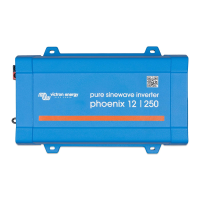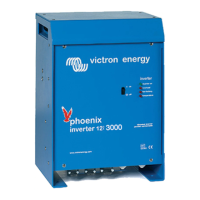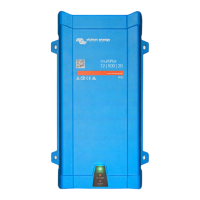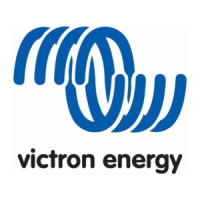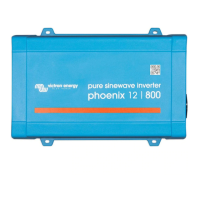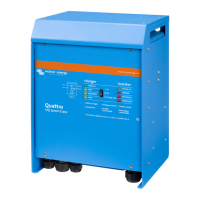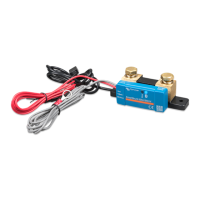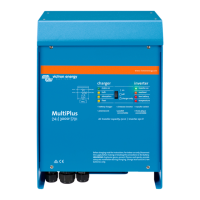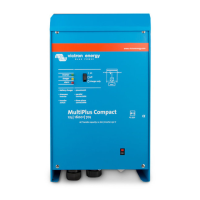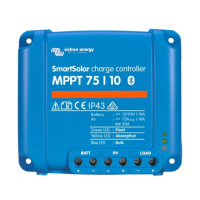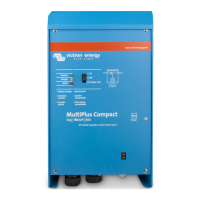
Do you have a question about the Victron energy EasySolar 12/1600/70 and is the answer not in the manual?
| Brand | Victron energy |
|---|---|
| Model | EasySolar 12/1600/70 |
| Category | Inverter |
| Language | English |
General safety and usage instructions for the product.
Instructions for safe and correct installation of the equipment.
Overview of the EasySolar as an all-in-one solar power solution.
Description of how the inverter provides continuous power during grid failures.
Explanation of managing limited AC input power by setting current limits.
How PowerAssist supplements limited AC sources with inverter power.
Information about the programmable relay and its potential applications.
Description of the microprocessor-controlled adaptive battery management system.
How absorption time adjusts based on discharge depth.
Specifications for charging current and PV input voltage.
Explanation of the ultra-fast MPPT for improved energy harvest.
How the controller handles partial shading for optimal MPP.
Details on the high conversion efficiency and fanless operation.
Description of the eight preprogrammed charge algorithms.
Information on over-temperature protection and power derating.
How to operate the product using the on/off and charger only switch.
Methods for remotely controlling the inverter/charger.
Procedures for equalisation and forced absorption charging modes.
Guidelines for selecting an appropriate installation location for the product.
Instructions for connecting battery cables, including cross-section recommendations.
Information on connecting a second battery for charging a starter battery.
Details on connecting and using the temperature sensor for charge compensation.
Options for remotely controlling the product via a switch or panel.
Explanation of the programmable relay function and its applications.
Overview of default factory settings for immediate use.
Explanation of inverter frequency settings and adjustability.
Description of the accepted input frequency range and synchronization.
Details on the accepted input voltage range and synchronization.
Explanation of output voltage during battery operation.
How Search Mode reduces power consumption in no-load conditions.
Explanation of AES mode for reducing no-load power consumption.
Function of the ground relay for earth leakage circuit breaker operation.
Description of the standard adaptive battery charge curve.
Information on suitable battery types and charge voltage settings.
Details on automatic equalisation for traction batteries.
Explanation of how absorption time is determined and set.
Reference to Section 2 for storage voltage and repeat settings.
Function of Bulk Protection to limit bulk charging time.
Settings for AC input current limits for PowerControl and PowerAssist.
How the UPS feature provides uninterruptible power supply.
Explanation of the dynamic current limiter for generators.
How WeakAC handles distorted input voltage for the charger.
Information about the BoostFactor setting.
Details on the default alarm function of the programmable relay.
Information about using VEConfigure software for advanced settings.
Guide to using VE.Bus Quick Configure for simpler system setup.
Instructions for VE.Bus System Configurator for complex systems.
Settings for DIP switches 1 and 2 related to panel options and remote control.
Table detailing charge voltage settings based on DIP switch configurations.
Setting the inverter frequency using DIP switch 5.
Configuring Search Mode using DIP switch 6.
Setting the AC input current limit with DIP switch 7.
Description of the default factory DIP switch settings.
Example configuration settings for DIP switches.
Another example configuration for DIP switches.
Troubleshooting steps for when the inverter does not operate.
Diagnosing issues when the alarm LED flashes.
Troubleshooting intermittent alarm LED flashes.
Interpreting and resolving issues when the alarm LED is constantly on.
Diagnosing and resolving issues with incomplete battery charging.
Troubleshooting steps for an overcharged battery in the solar system.
Diagnosing why battery charge current drops to zero during absorption.
Instructions for connecting PV panels using MC4 connectors.
Guidelines for configuring PV voltage and cell count for the controller.
Correct sequence for connecting battery and solar array.
Overview of preprogrammed charge algorithms and their selection.
Troubleshooting steps for a non-functioning solar charger.
Diagnosing issues when the solar battery is not fully charged.
Troubleshooting steps for an overcharged solar battery.
Technical specifications for the inverter/charger section.
Technical specifications for the charger section.
Technical specifications for the solar charge controller section.
